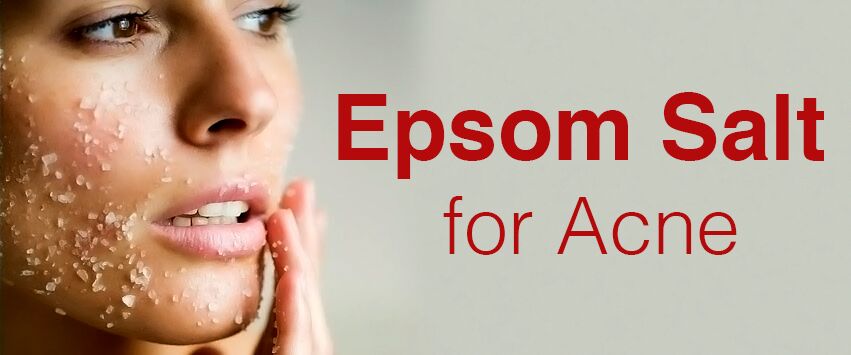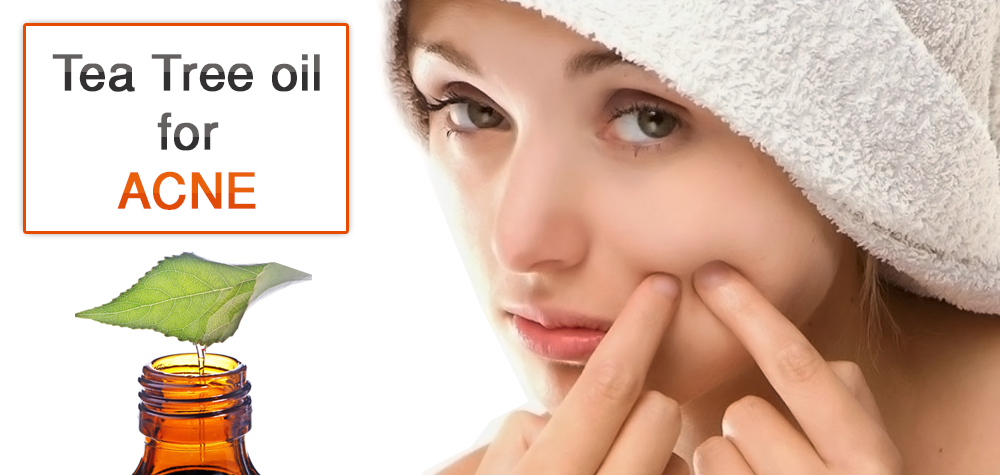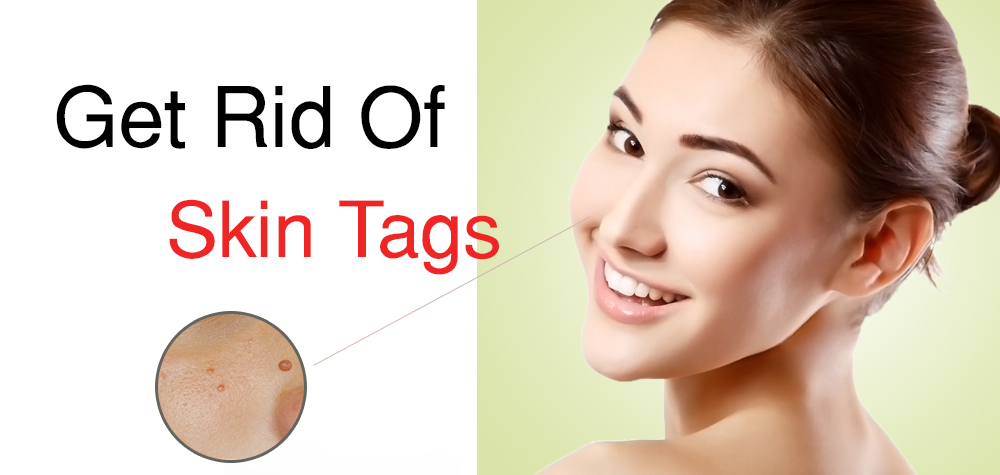Get Rid Of Stretch Marks Naturally | Safe And Effective Remedies
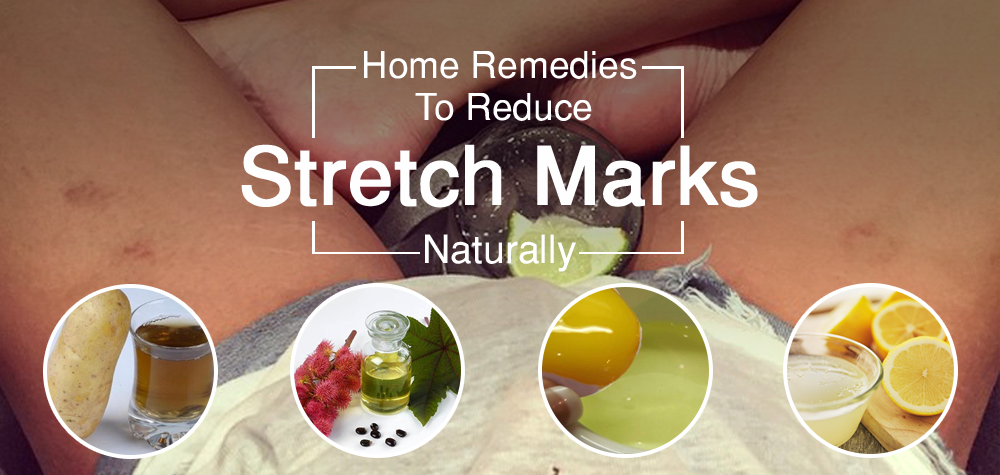
Are you not able to wear your favorite dress after motherhood?
Or you have recently shed some pounds and gotten an amazing body, but instead of being proud of it and flaunting it, you cover it up with layers of clothes.
Or you’ve become camera shy because of those “zebra stripes” called stretch marks on your body.
If yes, then you’re not the only one to whom mere mention of the words ‘stretch marks’ give jitters. There are a large number of people who have them and are finding ways to get rid of them.
In this article, we’ll try to answer a few questions related to stretch marks and also debunk some myths about them.
What Are Stretch Marks?
Stretch marks or striae or striae distensae are the stripes or streaks on the skin, especially on the abdomen, caused by the rapid stretching of the skin. When you grow or gain weight quickly (like during puberty), you can get fine lines on the body called stretch marks.
Although the skin is fairly elastic, but when it’s overstretched because of weight gain or loss, the normal production of collagen is disrupted. As a result, scars or stretch marks may form.
Causes of Stretch Marks: Understanding the Skin’s Response to Change
Stretch marks, pose no health risks, the appearance of these marks can lead to concerns about aesthetics. Understanding the causes of stretch marks is crucial for developing effective strategies to manage and prevent their occurrence.
— Rapid Growth During Puberty
One of the primary causes of stretch marks is rapid growth during puberty. Adolescents often experience sudden spurts in height, and the skin may struggle to keep pace with the body’s accelerated growth.
This can result in the development of stretch marks on areas such as the thighs, buttocks, and lower back.
— Pregnancy-Related Changes
Pregnancy is a common time for the emergence of stretch marks, particularly on the abdomen, breasts, and hips. As the baby grows, the skin on the abdomen stretches to accommodate the expanding uterus.
Hormonal changes during pregnancy also play a role, affecting the skin’s elasticity and making it more prone to developing stretch marks.
— Weight Fluctuations
Significant weight gain or loss can contribute to the formation of stretch marks. When the body undergoes rapid changes in size, the skin may struggle to adapt, leading to the development of stretch marks.
This can occur not only during pregnancy but also in individuals experiencing substantial weight fluctuations for other reasons.
— Genetic Predisposition
Genetics can play a significant role in determining an individual’s susceptibility to stretch marks. If close family members have experienced stretch marks, there may be a genetic predisposition that makes some individuals more prone to developing them.
However, genetics interact with other factors, and not everyone with a family history of stretch marks will necessarily develop them.
— Corticosteroid Use
The prolonged use of corticosteroid medications can contribute to the thinning of the skin, making it more susceptible to stretch marks.
These medications, whether applied topically or taken orally, can affect the collagen and elastin fibers in the skin, diminishing its ability to stretch and recover.
— Medical Conditions
Certain medical conditions, such as Cushing’s syndrome and Marfan syndrome, can increase the risk of developing stretch marks. These conditions affect the body’s connective tissues and can impact the skin’s elasticity.
You’re At A Risk Of Developing Stretch Marks If You
- Are a female
- Are pregnant
- Have pale skin
- Are obese
- Use or have used corticosteroid medications
- Have a family history
- Have dramatic weight gain or loss
- Have Cushing’s syndrome
Understanding the Different Types of Stretch Marks
1). Striae Rubrae (Red Stretch Marks)
Red stretch marks, also known as striae rubrae, are the early stages of stretch marks. They are characterized by a reddish or purplish hue and are often accompanied by inflammation. During this phase, the striae may be itchy and more noticeable.
The red coloration is a result of blood vessels showing through the thinned skin. Treating red stretch marks early can be more effective than addressing them at a later stage.
2). Striae Albae (White Stretch Marks)
As stretch marks mature, they often transition to striae albae, or white stretch marks. The red or purple color fades over time, and the marks take on a silvery or white appearance. White striae indicate that the damage to the skin has occurred, and the blood vessels are no longer as visible.
While these marks are less noticeable than their red counterparts, they can still pose a cosmetic concern for many individuals.
3). Striae Gravidarum (Pregnancy-Related Stretch Marks)
Pregnancy is a common time for the development of stretch marks, especially on the abdomen, breasts, and thighs. Striae gravidarum, or pregnancy-related stretch marks, can vary in color and severity. The hormonal changes and rapid expansion of the abdomen during pregnancy contribute to the development of these marks.
Moisturizing the skin, maintaining a healthy weight, and staying hydrated can help minimize the risk of developing severe pregnancy-related stretch marks.
4). Striae Atrophicans (Atrophic Stretch Marks)
Atrophic stretch marks, or striae atrophicans, are characterized by depressed or indented grooves in the skin. These marks often occur when the skin’s underlying support structure is damaged, leading to a loss of collagen and elastin fibers.
Atrophic striae can be more challenging to treat, and their appearance may not improve significantly with topical remedies alone.
5). Striae Distensae (Common Stretch Marks)
Striae distensae, or common stretch marks, can occur on various parts of the body and are often associated with periods of rapid growth or weight gain.
They can affect both men and women. Prevention through gradual weight gain or loss, maintaining skin elasticity, and staying hydrated can help reduce the likelihood of developing common stretch-marks.
Types of Stretch Marks on the Body
1. Stretch Marks on Arms and Legs
Stretch marks on the arms and legs can develop during periods of rapid growth, such as adolescence, muscle growth, when you’re weight lifting or bodybuilding. They often appear as long, thin streaks and may have a reddish or purple hue initially.
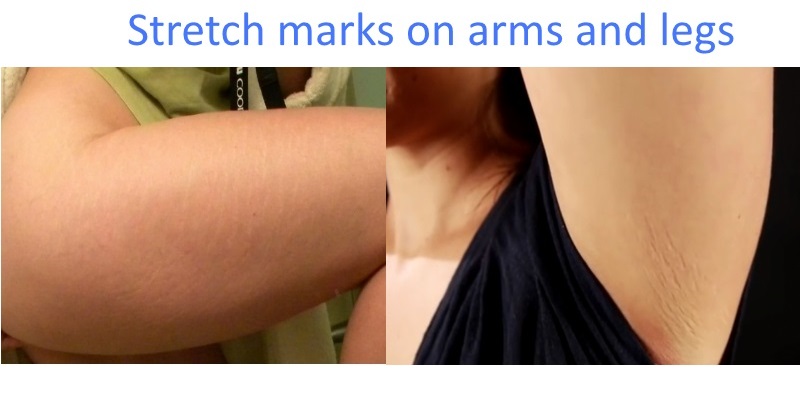 They’re not the nicest thing to look at, but they are like a badge of honor that you receive for putting in your precious time and dedication to the muscle game. Also, if you grew very rapidly during puberty, your skin might stretch too fast and far, resulting in striae on your arms and legs or even your sides.
They’re not the nicest thing to look at, but they are like a badge of honor that you receive for putting in your precious time and dedication to the muscle game. Also, if you grew very rapidly during puberty, your skin might stretch too fast and far, resulting in striae on your arms and legs or even your sides.
As the marks mature, they may fade to a silvery or white color. Moisturizing the skin regularly and maintaining a healthy lifestyle can help minimize the visibility of stretch-marks on the arms and legs.
2. Stretch Marks on Breast
Breast tissue undergoes significant changes during puberty, pregnancy, and breastfeeding, making it susceptible to stretch marks. Striae on the breasts can range from pink to dark brown in color.
Keeping the skin hydrated and using creams or oils specifically designed for stretch-marks may assist in preventing and managing marks on the breasts. It’s pretty normal and you’re not alone, there are other girls also, who are also dealing with the same thing.
3. Stretch Marks on Stomach
The abdominal area is a common location for stretch marks, particularly during pregnancy, a woman gains about 50-60 pounds and growing this fast, results in striae on the stomach.
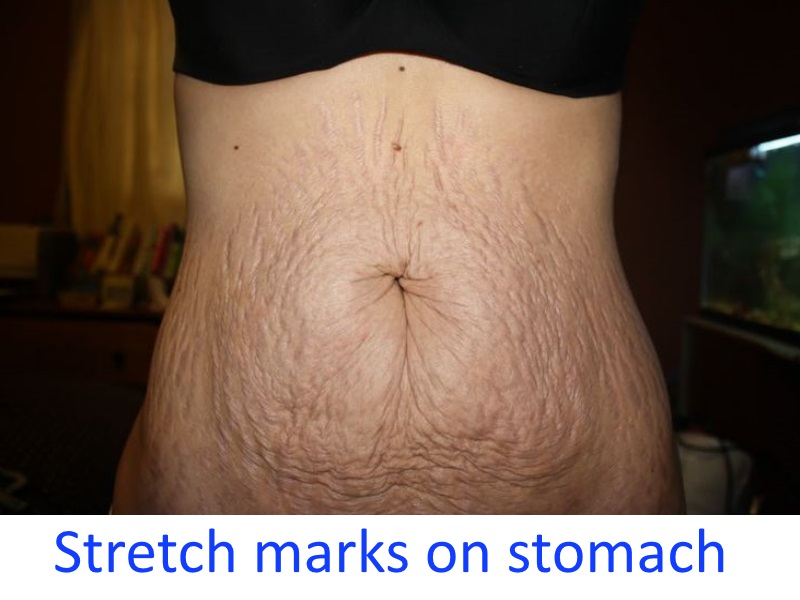
Striae on the stomach often start as red or purple marks and may evolve into white or silvery lines over time. Proper skin care, including moisturizing and maintaining a healthy weight, can contribute to minimizing the appearance of stretch-marks on the stomach.
4. Stretch Marks on Hips and Thighs
The hips and thighs are prone to stretch marks due to growth spurts, weight gain, or pregnancy. These marks may appear horizontally or vertically and can vary in color.

Regular exercise, a balanced diet, and staying hydrated can support the skin’s elasticity, potentially reducing the risk of developing striae in these areas.
5. Stretch Marks on Calves
While less common, stretch marks can also appear on the calves, especially during periods of rapid muscle growth or weight gain. These marks may be red, purple, or white.
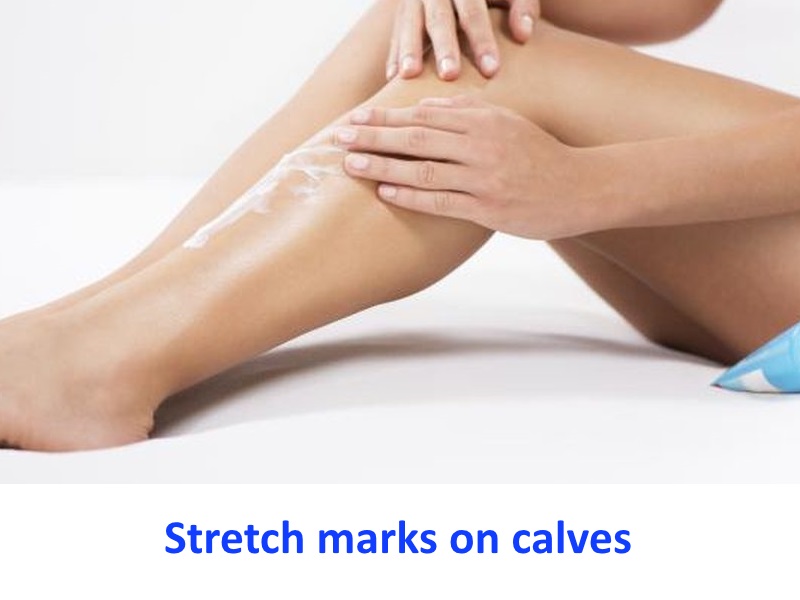
Stretch-marks appearing horizontally on the calves are most likely from height growth and the ones appearing vertically on the calves are most likely due to rapid weight gain, either from increased muscle size or fat in the lower legs.
If you are an athlete or do lower-leg and calf strength training, then you may witness striae on your calves due to increased calf musculature.
How To Prevent Stretch Marks?
The only best way to reduce the possibility of getting stretch marks is to maintain a healthy weight and lifestyle. During pregnancy you’ll gain around 50 pounds over a brief period of 9 months.
Consult your doctor to avoid gaining too much. This will not only minimize striae but will also be healthy for you and your baby.
Natural Remedies to Get Rid of Stretch Marks
Getting rid of stretch-marks is not easy, because they’re stubborn and will not fade away completely.
1. Olive Oil is Your Skin’s Best Friend
Olive oil is a popular remedy for stretch-marks, especially pregnancy marks because it contains a lot of antioxidants and nutrients that help in fighting various skin problems.
What You Have To Do:
- Take slightly warm extra-virgin olive oil
- Apply the oil on the affected area and massage gently
- Leave it for half an hour
- After that, take bath to remove excess oil
No doubt, olive oil is affective on those unwanted stretch-marks, but you’ve to be patient because this process will test your patience.
2. Egg White
It sounds a little icky, but the amino acids and proteins in egg whites repairs skin tissues and help your skin to rejuvenate. Therefore, applying egg whites is considered to be an effective home remedies to get rid of stretch marks.
What You Have To Do:
- Whip 2 egg whites in a bowl
- Apply a thick layer of egg whites on the marks
- Let it dry completely
- Then, rinse with cold water
- Apply olive oil to moisturize the skin (optional)
Try this method daily for two weeks and watch your stretch marks fade away.
3. Potatoes to the Rescue
Potatoes contain minerals and vitamins that foster growth and restoration of skin cells. So, if you apply potato on the marks, it’ll make them less apparent.
What You Have To Do:
- Cut a potato into thick slices
- Take one slice and rub it for a few minutes
- Allow it to dry for some time
- Wash it off with lukewarm water
Apply it twice a day for two weeks and see the results yourself.
4. Aloe Vera – The All Rounder
Aloe Vera has anti-oxidants, nutrients, essential moisture and other powerful healing properties that can repair the damaged skin cells. Therefore it can help in lightening those stubborn stretch marks effectively.
What You Have To Do:
- Take a small slice of Aloe Vera and peel its skin with a knife
- Apply the gel that will come out of it on the affected skin
- Leave it for 15 minutes
- Then, rinse with lukewarm water
Aloe Vera is gentle enough to be used during or after pregnancy. Regular application of it on stretch marks will help you to rejuvenate and regenerate the skin, which in turn helps to lessen stretch-marks on skin.
5. Castor Oil- Blessing for Pregnant Women
Many gynecologists recommend castor oil to pregnant women at full term to be taken orally because it induces labor by pushing uterus contraction. Castor oil is worth a try when you want to get rid of pimples, fine lines, dark spots and want to reduce the appearance of marks.
What You Have To Do:
The heat will allow the pores to open up and oil absorption will take place easily. Use this remedy for a month, only then you’ll be able to see the desired results.
Check out an Infographics on how to get rid of stretch marks

Conclusion
While it may not be possible to completely eliminate marks, various strategies can help minimize their appearance. Embracing one’s body and understanding that stretch-marks are a common and natural part of life is crucial for fostering a positive body image.
Whether through lifestyle changes, topical treatments, or professional interventions, finding the right approach for you can contribute to a more confident and comfortable relationship with your skin.
We hope that most of your queries are answered in this article and you’ll benefit from them. If some other home remedy has helped you to get rid of stretch marks, do share it with us.
You can also share your experiences of dealing with this nuisance in the comment section below.
Silly Myths and Frequently Asked Questions
Only women are affected by stretch marks?
For example: Body Builders and male athletes are prone to stretch mark due to severe stretching of the skin. So basically, stretch mark apart from pregnancy can also appear due to growth spurts during puberty and sudden weight gain or loss.
I’m skinny, I’ll not get stretch marks
Also, if the skin itself is weak, then it’ll stretch easily and give you stretch mark.
Lose weight and Lose stretch marks
Why? Because stretch-marks are basically scars on the dermis (middle layer of skin.) They’re caused by the thinning or overstretching of this middle layer and losing weight will not help it return to normal.
Tanning can remove striae
How? Mature white colored stretch mark will become more visible after tanning because it’ll darken the surrounding skin but not the stretch-marks.
As we’ve mentioned earlier, stretch-marks are scars and scars don’t tan.
Permanent removal of stretch marks is possible
Why? Because, applying certain creams can heal up the visible layer of the skin (epidermis,) but the scars will always stay there in the dermis. This is a good thing actually because you can’t see dermis at all and no one else can as well.
In some cases, stretch mark below the belly button can completely disappear when abdominoplasty is performed.


